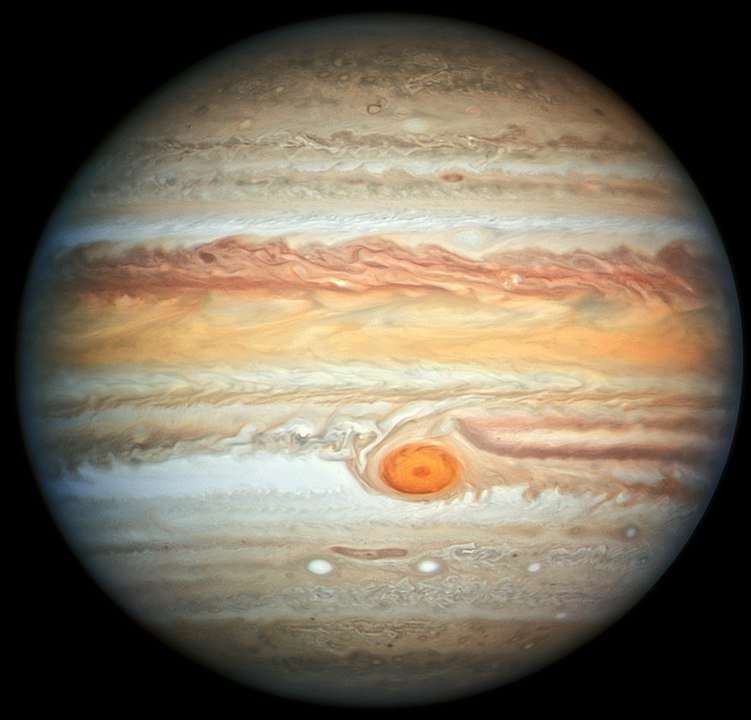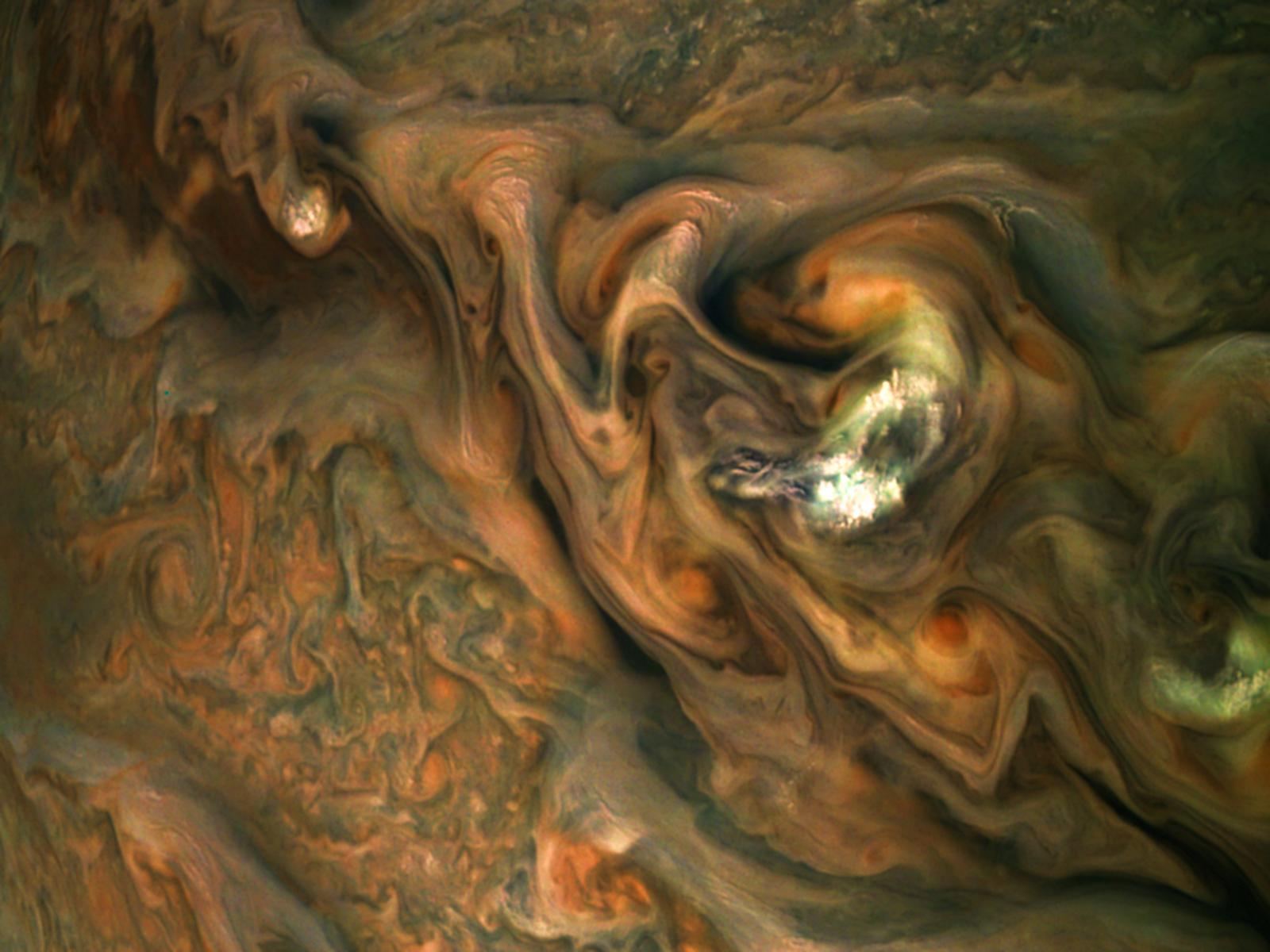Though it looks like it to us, Jupiter’s clouds do no form a flat surface. Some of its clouds rise up above the surrounding cloud tops. The two bright spots in the right center of this image are much higher than the surrounding clouds.
Jupiter’s atmosphere is a swirling, colourful, chaotic mix-up of currents and eddies. Thanks to NASA’s Juno spacecraft, we know that Jupiter’s swirling bands of clouds can extend deep into the planet. They go as deep as 3,000 km (1900 miles.)

Jupiter’s atmosphere is the deepest of any planet in the Solar System. Jupiter has no solid surface, but the atmosphere is generally considered to end at the point where the pressure reaches 100 kPa (1.0 bar). Though what scientist call the cloud layer may only be about 50 km (30 miles) deep, Jupiter’s atmospheric bands can extend down to a much greater depth.
If this sounds a little confusing, it’s because Jupiter’s atmosphere and internal structure are very complex.
Exactly how deep Jupiter’s storm bands went has been a mystery for decades. Juno was able to measure them with its Gravity Science instrument. The deeper the cloud streams are, the more mass they contain, which the Gravity Science instrument was able to measure.

This new image of bright spots rising up above the rest of Jupiter’s clouds comes from citizen scientist Gerald Eichstädt. Eichstadt used an image from Juno’s JunoCam to create this enhanced-color image. The JunoCam image is from May 29th, 2019, and was taken at a distance of 9,700 km (6,000 miles) during Juno’s 20th close flyby of Jupiter. There’s a gallery of processed images here.
The Juno mission arrived at Jupiter on July 5th 2016. It’s mission is expected to end in July, 2021.

